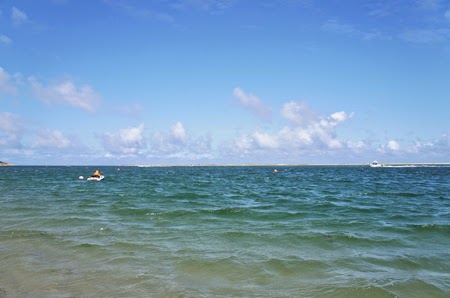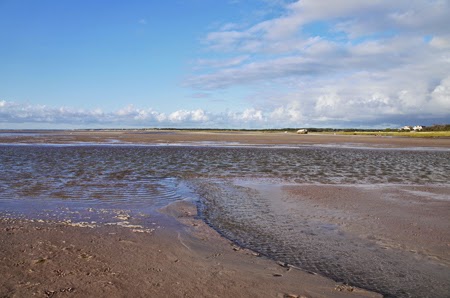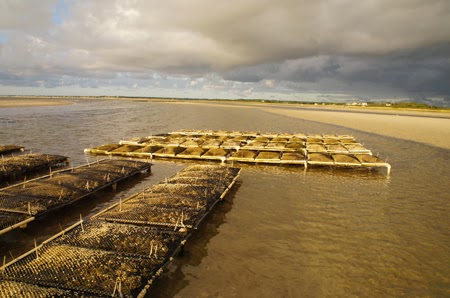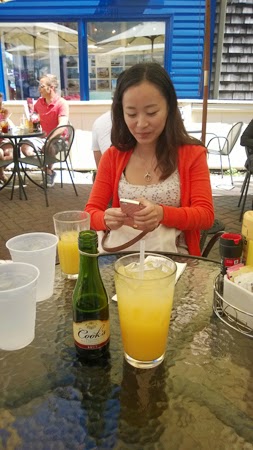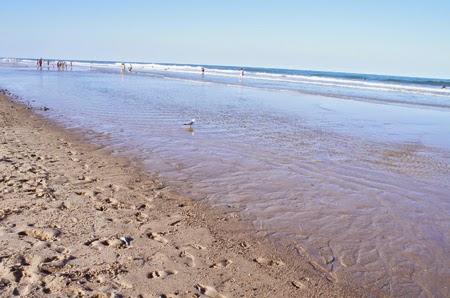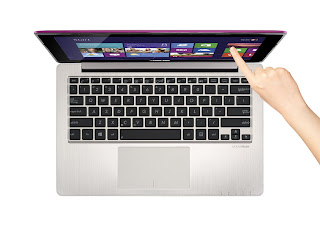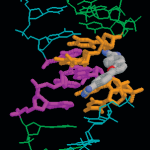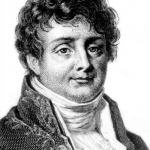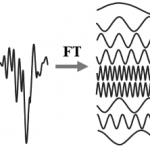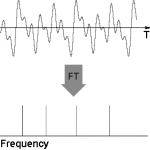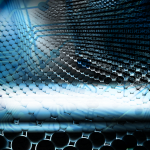http://msk-anatomy.blogspot.com/2013/04/anterior-commissure-in-brain.html
I enjoyed sharing my life experience with others. Hope this blog can be helpful. Let us have courage and be kind to one another every day. A short bio about me: I grew up in Shanghai, China and owned my Ph.D. in BME from University of Cincinnati in the end of 2013 and moved to Boston for a post-doc position at Boston Children's Hospital/Harvard Medical School. I used advanced imaging techniques (MEG, FMRI, EEG, DTI, etc) to study normal language and reading development in the past 10 years.
Showing posts with label Miscellaneous. Show all posts
Showing posts with label Miscellaneous. Show all posts
Monday, November 3, 2014
Wednesday, October 29, 2014
FW: How can I visualize longitudinal data in ggplot2?
http://www.ats.ucla.edu/stat/r/faq/longitudinal.htm
Great information teaches how to visualize longitudinal data.
Tuesday, August 26, 2014
鳕鱼岛之行 8/23-24/2014
好久没有更新blog了,毕业了,好多事情忙,从辛辛那提搬到波士顿,爸妈陪我4个多月。他们走后,一切又要从零开始,开始交新朋友,找当地的好教会,我在教会遇到了一个很特别的朋友:钟钟。她从小就是基督徒,这在我接触到的中国朋友中,并不多。我们一起去了波士顿附近的鳕鱼岛。
我当初安排这个旅行的时候,没有发现一个很系统的2日游行程,多半是3日,4日,等等。所以想分享一下上个周末短暂的2日游鳕鱼岛的经历,希望对别人有帮助。没有太多假期,就利用周六周日去玩了。cape code一天也能玩下来的,就是会比较累。这次由于时间关系没有机会去Martha's Vineyard (钟钟应该很想去,她至少10次提到了这个岛 --- ^_^)
第一天行程map:
我当初安排这个旅行的时候,没有发现一个很系统的2日游行程,多半是3日,4日,等等。所以想分享一下上个周末短暂的2日游鳕鱼岛的经历,希望对别人有帮助。没有太多假期,就利用周六周日去玩了。cape code一天也能玩下来的,就是会比较累。这次由于时间关系没有机会去Martha's Vineyard (钟钟应该很想去,她至少10次提到了这个岛 --- ^_^)
第一天行程map:
周六早上,8点从Someville, MA出发开往第一个目的地:Chatham Pier and Fish Market (45 Barcliff Ave,Chatham,MA 02633),10点半左右就到的,时间还比较早,肚子还没饿,我和钟钟就开始随意逛。
有海狮(不太确定是海狮还是海豹http://kid.qq.com/a/20080226/000141.htm),还有各种海鸟,名字叫不出。我们沿着沙滩走,到了Chatham Hotel Inn的reserved beach,有些人在玩水上的paddle板,小孩子在沙子里找金属,等等。
当我们打算要走的时候,发现有渔船要靠岸了,于是,2人兴高采烈得跑去看。
我问:”这是什么鱼?看上去好大?"
钟钟非常自信地说:“比目鱼!”
为了好玩,我去问了一个游客,她说是“Stingrays”(中文是黃貂魚)。
哈哈,原来钟钟在忽悠我...(开玩笑的)...她真是很认真地告诉我就是比目鱼。
网上说Chatham Pier and Fish Market应该有很新鲜的海鲜。于是我们想去买龙虾吃。但我们又不想吃lobster roll,于是我们问了有没有steamed,她们说要一个小时,2.5磅24美金左右,这家店没有座位的。只有买了到外面吃。我就要了一个大的,我们2人分着吃的。我后悔当初没有要2个1磅多的了。因为真是很好吃,价格也公道,非常值!(建议早点去预订,然后去沙滩转转,1小时后正好去取steamed大龙虾!)
于是,我们先去了第二站lighthouse,1点15分再回到fish market去取大龙虾的。Chatham Lighthouse (Chatham, MA, Chatham, MA 02633)
灯楼只有周三对外开放,周六不开放。我们就去海边看看了,沙滩的沙子很软。人挺多的,免费哦!
(1)Provincetown Harbor,Commercial Street. Provincetown, MA 02657 -- 看日出!
(2)Pilgrim Monument – climb up to the top, 1 High Pole Hill Rd, Provincetown, MA 02657
(3)Bike the Beech Forest Trail -- Race Point Rd, Provincetown, MA 02657 (will get to see Race Point and Herring Cove beaches) 42 Bradford Street, Provincetown, MA 02657
(4)Cape Cod National Seashore (Salt Pond Visitor Center, 50 Nauset Road, Eastham, MA 02642)
这之后,钟钟想吃sushi,于是我们去了一家sushi店http://www.misakisushi.com/,很不错。8点左右开回波士顿。10点半送钟钟回家,11点自己才到家。这个短暂的周末,玩得非常开心!不知道下次什么时候还有机会去cape cod了。^_^
有海狮(不太确定是海狮还是海豹http://kid.qq.com/a/20080226/000141.htm),还有各种海鸟,名字叫不出。我们沿着沙滩走,到了Chatham Hotel Inn的reserved beach,有些人在玩水上的paddle板,小孩子在沙子里找金属,等等。
当我们打算要走的时候,发现有渔船要靠岸了,于是,2人兴高采烈得跑去看。
我问:”这是什么鱼?看上去好大?"
钟钟非常自信地说:“比目鱼!”
为了好玩,我去问了一个游客,她说是“Stingrays”(中文是黃貂魚)。
哈哈,原来钟钟在忽悠我...(开玩笑的)...她真是很认真地告诉我就是比目鱼。
网上说Chatham Pier and Fish Market应该有很新鲜的海鲜。于是我们想去买龙虾吃。但我们又不想吃lobster roll,于是我们问了有没有steamed,她们说要一个小时,2.5磅24美金左右,这家店没有座位的。只有买了到外面吃。我就要了一个大的,我们2人分着吃的。我后悔当初没有要2个1磅多的了。因为真是很好吃,价格也公道,非常值!(建议早点去预订,然后去沙滩转转,1小时后正好去取steamed大龙虾!)
于是,我们先去了第二站lighthouse,1点15分再回到fish market去取大龙虾的。Chatham Lighthouse (Chatham, MA, Chatham, MA 02633)
灯楼只有周三对外开放,周六不开放。我们就去海边看看了,沙滩的沙子很软。人挺多的,免费哦!
逛完沙滩,我们就开往第三站Monomoy National Wildlife Refuge,想要徒步走走看看。http://www.fws.gov/refuge/Monomoy/ (30 Wikis Way Chatham, MA 02633),在那里的停车场,我们吃了午饭(大龙虾),然后开始逛national wildlife refuge,天开始有点阴,还下了一点点地雨。这是网上推荐的一个地方之一,不过我们一致同意,如果你不是生物学家或者看鸟或钓鱼的人,就没那么特别。(tips:那里有免费租用望远镜哦,抵押驾照就行了)
望远镜在5点之前要归还,于是我们5点回到了visitor center。这之后,我们就打算去第四站。经过40分钟的紧张驾驶,钟钟勇敢地把车开到了第四站Rock Harbor Sunset (Rock Harbor Rd., Orleans, MA, 02653)YEAH!刚下车,钟钟说:“这里怎么这么磋啊~~~”,超逗~~我们以为走错地方了,然后问了路上的旅客,他们说这就是传说的Rock Harbor,有着最有美的日落景。当我们走到沙滩边,景色越来越美起来了。
这个地方确实很美(看照片就知道咯),我们到的时候是潮水低的时候,我们在沙滩上漫步1个多小时 (聊天南地北,听钟钟美丽动人的歌声回荡在这旷阔的天水之间)。7点左右,我们往回走,发现原来走过的沙滩已经被潮水淹没了,好在水还不深,我们安全返回了岸边。等日落等到7点40分左右,不过真的是很美。很宁静。
第一天的最后一站就是去hotel check-in了,钟钟开了一个多小时的夜路 (辛苦了),9点15分左右达到harbor hotel(698 Commercial Street,Provincetown, MA 02657,http://www.harborhotelptown.com)。把东西放在hotel,我们就去镇上了。哇,真是同志城。好多帅哥,不过都是同志。钟钟很不喜欢,觉得很鬼异,于是我们吃了点东西就回hotel了,没有在镇上疯玩。在那种环境下,我们2个女生走在那里,估计也会被人假定成同志了。呵呵。
好了,这就是第一天的行程。
第二天,我们没有早起,8点去hotel的泳池游泳,直到10点,11点30才check out,我们真是很放松,没有考虑好时间,所以第二天的行程有所改变。我们没有去Pilgrim Monument,只是远远的看到它,也没有bike,因为时间关系。我们在镇上吃了早中饭,还有mimosa喝噢!
原本的行程:
(4)Cape Cod National Seashore (Salt Pond Visitor Center, 50 Nauset Road, Eastham, MA 02642)
1-3都没有做,由于时间和体力关系。我们去了Marconi beach (15美金一天停车费)。这是我们这2天看到最美的一个beach,浪也很大,绝对推荐!
这之后,钟钟想吃sushi,于是我们去了一家sushi店http://www.misakisushi.com/,很不错。8点左右开回波士顿。10点半送钟钟回家,11点自己才到家。这个短暂的周末,玩得非常开心!不知道下次什么时候还有机会去cape cod了。^_^
Wednesday, August 28, 2013
FW: Interesting Article
At the end of this article, the claim about "internet affects memory" -- Use myself as an example, I did feel the changes in my memory (loss) after I had computer and internet.
Read this article (interesting! share in my blog):
http://www.smartplanet.com/blog/science-scope/scientists-figured-out-why-we-cant-get-smarter/9631
Scientists figured out why we can’t get smarter
By Boonsri Dickinson | August 1, 2011, 12:12 PM PDT

Here’s an interesting fact: Smart people have faster impulses in the brain than less intelligent people. That’s all according to one Cambridge professor by the name of Ed Bullmore. But as far as getting any smarter, tough luck. British scientists made a convincing case for why our brains have reached full capacity: Human brains would consume too much energy.
Simon Laughlin, professor of neurobiology, at Cambridge University told The Sunday Times: ‘We have demonstrated that brains must consume energy to function and that these requirements are sufficiently demanding to limit our performance and determine design.”
There’s a chance the human brain could start to conserve energy and bring us back towards the size of the noggins of our Neanderthal ancestors. The researchers took into account the structure of the brain and figured out how much energy brain cells consume.
Mathematically speaking, the brain is an energy hog. It’s physically smaller than the rest of the human body, yet it consumes 20 percent of our energy. Energy is needed to fire electrical impulses so neurons can communicate with each other and also maintain the health of the cells to keep the tissues in the brain alive.
To get any smarter, the brain would need extra energy and oxygen, something all the coffee and Red Bull in the world probably can’t provide. Also, in the The Sunday Times story, the researchers say there’s a link between how connected different brain areas are and IQ. However, there isn’t enough energy to keep up with any increase in brain power.
Say it ain’t so that brain connections can’t get much better than this. Perhaps, this is as good as it gets.
With the way things are going with the Internet, maybe we can off-load some of the work onto computers and save some energy. If you recall, a recent study showed that the Internet affects your memory. On the upside, we’ve been able to overcome energy hurdles when building computers, so maybe there’s a chance we can do the same for human brains. If not, then scientists can always try to use machines to augment human intelligence or the other way around.
According to a recent Time magazine feature:
46 years later, Kurzweil believes that we’re approaching a moment when computers will become intelligent, and not just intelligent but more intelligent than humans. When that happens, humanity — our bodies, our minds, our civilization — will be completely and irreversibly transformed. He believes that this moment is not only inevitable but imminent. According to his calculations, the end of human civilization as we know it is about 35 years away.via The DailyMail but the story originally appeared in The Sunday Times
Photo: NSF
http://www.creativitypost.com/psychology/the_brain_as_a_network_focusing_your_network
Brain scan study to understand workings of teenage mind: http://www.bbc.co.uk/news/health-22510866
http://www.creativitypost.com/psychology/the_brain_as_a_network_focusing_your_network
irrelevant notes: http://www.jobs.cam.ac.uk/job/?category=2
Tuesday, August 6, 2013
August 26 - Fifth year of Ph.D. study
Autumn Semester of Fifth year Ph.D. study will start on August 26. Time really flies. Soon, I will graduate and own my Ph.D. in Biomedical Engineering and start another journey in academia.
Look back, I really appreciate all the great people I encountered and thanks God for his blessings to be surrounded with great leaders and wonderful opportunities.
Without my mentors (Drs. Scott Holland and Christy Holland, Jerzy Szaflarski, Jarek Meller, Weihong Yuan, Jennifer Vannest, Jing Xiang, Tzipi Horowitz-Kraus, etc), I would not be able to accomplish what I have accomplished. The whole experience of get your Ph.D. is irreplaceable.
My take home message: You need to be eager to learn, be a good team-player, and always have a positive attitude. Remember, you might not be able to change or control your circumstance, but you can definitely control your response to the circumstance. Good luck with everyone who is considering of pursing a Ph.D. or is currently pursing Ph.D. Hang in there. A big rainbow is waiting for you at the end of the P.H.D journey.
Look back, I really appreciate all the great people I encountered and thanks God for his blessings to be surrounded with great leaders and wonderful opportunities.
Without my mentors (Drs. Scott Holland and Christy Holland, Jerzy Szaflarski, Jarek Meller, Weihong Yuan, Jennifer Vannest, Jing Xiang, Tzipi Horowitz-Kraus, etc), I would not be able to accomplish what I have accomplished. The whole experience of get your Ph.D. is irreplaceable.
My take home message: You need to be eager to learn, be a good team-player, and always have a positive attitude. Remember, you might not be able to change or control your circumstance, but you can definitely control your response to the circumstance. Good luck with everyone who is considering of pursing a Ph.D. or is currently pursing Ph.D. Hang in there. A big rainbow is waiting for you at the end of the P.H.D journey.
Tuesday, July 30, 2013
Friday, March 15, 2013
Upgrade ASUS x202e
Recently, I got ASUS x202e with discover points award. This cute pink touch-screen laptop only cost me 360 bucks from Amazon.com. (http://www.amazon.com/gp/product/B00B7JQQQA/ref=oh_details_o04_s00_i00?ie=UTF8&psc=1)
Technical Details
Summary
| Screen Size | 11.6 inches |
| Max Screen Resolution | 1366x768 pixels |
| Processor | 1.8 GHz Core i3-3217U |
| RAM | 4 GB DDR3 |
| Hard Drive | 500 GB |
| Graphics Coprocessor | Intel GMA HD |
| Wireless Type | 802.11bgn |
| Number of USB 2.0 Ports | 2 |
| Number of USB 3.0 Ports | 1 |
Other Technical Details
| Brand Name | Asus |
| Series | ASUS VivoBook |
| Item model number | ASUS VivoBook X202E-DH31T-PK |
| Hardware Platform | PC |
| Operating System | Windows 8 |
| Item Weight | 2.9 pounds |
| Item Dimensions L x W x H | 11.90 x 7.90 x 0.80 inches |
| Color | Pink |
| Processor Brand | Intel |
| Processor Count | 2 |
| Computer Memory Type | DDR3 SDRAM |
| Hard Drive Interface | Serial ATA-300 |
| Hard Drive Rotational Speed | 5400 RPM |
| Batteries | 1 Lithium ion batteries required. (included) |
I really like the color and solid build of this cute laptop. The System is a little slow. I decided to upgrade the hard disk to SSD and the wireless card to Intel 6235AN.
(2) Intel Network 6235AN.HMWWB Centrino WiFi Card Advanced-N 6235 Dual Band Bluetooth (22 bucks)
(3) Windows 8 Pro 64-bit student version from school (8 bucks)
~200 bucks in total for upgrading cost.
Steps for installation of SSD hard disk:
[1] unscrew the 9 screws in the bottom
[2] you need an old credit card to open the lid (see figure)
[3] unscrew the 3 screws which hold the hard disk.
[4] you can remove the black foam and put on the SSD hard disk, or you don't have to do that since SSD is not as fragile as the regular hard disk.
Steps for installation of new Intel 6235AN wireless card (will boost the surf speed):

[2] put the new one in the place, black-main, white-AUX
Bingo!
Done!
Use external DVD player and install the clean windows 8 pro 64-bit. Very fast installation.
This upgrade made this laptop boots much fast. I love it and enjoy the great deal.
ASUS x202e - A budget touch-screen (11.6 inch) laptop! - highly recommended to those who want to find a light-weighted and touch-screen laptop.
Much cheaper than Mac Air or Dell XPS 12.
If you don't have tight budget, I would recommend you to look into DELL XPS 12 - Cool design unit.
Hope the information is helpful to you!
Sunday, September 23, 2012
Recent - play with SPM and GIFT
Learned to use SPM for fMRI data analysis and GIFT for group ICA analysis.
Wrote some scripts for that.
If you're interested, please feel free to email me.
========= side story ========
9.23.2012
Afternoon
I was so scared when my laptop went to blue screen. I took the hard disk out and use external enclosure to plug it into my desktop. One partition became unallocated. Jesus! My important data were in that partition. When I almost lost my hope, I found a free software which called testdisk (http://www.cgsecurity.org/wiki/TestDisk). It fixed the partition table of my hard disk. My lost unallocated partition was found. THANKS my LORD. At the end, I saved my data. I am very thankful for GOOGLE and whoever made this little tool (testdisk). Otherwise, I am not sure if I can recover my data. Cheers! I donated a little money to the project (testdisk) for supporting their future development. Nice job!
Wrote some scripts for that.
If you're interested, please feel free to email me.
========= side story ========
9.23.2012
Afternoon
I was so scared when my laptop went to blue screen. I took the hard disk out and use external enclosure to plug it into my desktop. One partition became unallocated. Jesus! My important data were in that partition. When I almost lost my hope, I found a free software which called testdisk (http://www.cgsecurity.org/wiki/TestDisk). It fixed the partition table of my hard disk. My lost unallocated partition was found. THANKS my LORD. At the end, I saved my data. I am very thankful for GOOGLE and whoever made this little tool (testdisk). Otherwise, I am not sure if I can recover my data. Cheers! I donated a little money to the project (testdisk) for supporting their future development. Nice job!
Thursday, May 10, 2012
Life Motto from my Dad
人生格言
严肃不可孤僻 热情不可轻狂
活泼不可风流 和气不可盲从
稳中不可呆板 沉着不可寡言
尊重不可迁就 玩笑不可商人
我的生辰: 1980年5月31 下午4点生
严肃不可孤僻 热情不可轻狂
活泼不可风流 和气不可盲从
稳中不可呆板 沉着不可寡言
尊重不可迁就 玩笑不可商人
4.3 两
此乃财禄厚重白手成家之命也!
为人心性最聪明.
作事轩昂近贵人..
不须劳碌是丰享.
Monday, January 16, 2012
FW: 15 super foods for kidney health
15 super foods for kidney health
Most of us know that eating a balanced diet is important for good health. Now scientists have pinpointed certain foods as super foods. In addition to promoting overall health, these are foods for kidney health as well.To understand why they're called super foods, we first have to understand oxidation and free radicals. Oxidation is a normal bodily process for producing energy and is part of many chemical changes in your body. However, it can sometimes lead to the production of molecules called free radicals. Free radicals are unstable molecules that bounce wildly around inside your body, damaging proteins, genes and cell membranes. Free radicals are believed to contribute to aging and many chronic diseases, including cancer, heart disease and Alzheimer's disease.
The good news is super foods contain antioxidants that help neutralize free radicals. Even in relatively low amounts, antioxidants can help slow or stop the rate of oxidation caused by free radicals. Examples of antioxidants include flavonoids, lycopene and vitamins C, E and beta-carotene.
Super foods for your kidneys
If you are on dialysis or have chronic kidney disease (CKD), you'll be glad to know that there are lots of super foods, containing antioxidants and other health-supporting properties, included in the kidney diet. People with kidney disease experience more inflammation and have a higher risk of cardiovascular disease than those without kidney problems. If you have kidney disease, it's important that you consult a renal dietitian and follow a kidney diet. Including super foods in your kidney diet eating plan can help you increase your intake of nutrients and antioxidants.Here’s a list of the top 15 kidney-friendly super foods. These foods are good for everyone, not just people with kidney disease, so by using them in your family's meals, you'll be helping your loved ones enjoy good health too.
1. Red bell peppers
Red bell peppers are a good choice for those concerned about kidney health, because they're low in potassium. In addition, they add color and taste to any dish, while packing a generous portion of vitamins A, C, B6, folic acid and fiber. They also contain the antioxidant lycopene, which protects against certain types of cancer.
If you're following the kidney diet, it's easy to add red bell peppers to your food plan. Mix them into tuna or chicken salad or eat raw with dip. Roasted, they're great for topping sandwiches or green salads. Chop them up for use in egg dishes, such as omelets or scrambled eggs, add them to kabobs for grilling or stuff them with a ground beef or turkey mixture for a tasty baked entrée.
2. Cabbage
Crunchy cabbage is a cruciferous vegetable filled with phytochemicals, chemical compounds found in certain fruits and vegetables. Phytochemicals work to break apart free radicals. Many phytochemicals are believed to combat cancer and support cardiovascular health.
Inexpensive cabbage is a great addition to your eating plan, because it's also high in vitamins K and C, high in fiber and a good source of vitamin B6 and folic acid, yet it's low in potassium, so it's especially kidney-friendly.
If you're following the dialysis diet, add cabbage by turning it into coleslaw or use as a topping for fish tacos. Cabbage can be boiled, steamed or microwaved and then enjoyed with a touch of butter or cream cheese and a sprinkling of pepper or caraway seeds. Other nutritious meal options include cabbage rolls and stuffed cabbage.
3. Cauliflower
Another kidney-friendly super food is cauliflower. This cruciferous vegetable brings lots of vitamin C to your plate, along with folate and fiber. In addition it contains compounds that help your liver neutralize toxic substances.
Cauliflower can be eaten raw with dip or in salads. Steamed or boiled, it can be seasoned and turned into a great side dish. You can even mash cauliflower as a dialysis-friendly replacement for mashed potatoes.
4. Garlic
Garlic is good for reducing inflammation and lowering cholesterol. It also has antioxidant and anti-clotting properties. (Cooking garlic will not affect its antioxidant properties, but it will reduce its anti-clotting and anti-inflammatory effects.)
If you're following the dialysis diet, use garlic powder instead of garlic salt to add extra flavor to your meals without adding extra sodium. Garlic can be used in cooking many dishes: meat, vegetables or tomato sauce, for instance. Once you start cooking with garlic, you'll wonder how you ever got along without it.
5. Onion
Another popular food used for seasoning is the onion. Onion is full of flavonoids, particularly quercetin. Flavonoids are natural chemicals that prevent the deposit of fatty material in blood vessels and add pigmentation (color) to plants. Quercetin is a powerful antioxidant that is believed to help reduce heart disease and protect against many forms of cancer. It also has anti-inflammatory properties.
Low in potassium, onions are not only kidney-friendly; they also contain chromium, a mineral that assists your body with the metabolism of fats, proteins and carbohydrates.
Onions can be enjoyed raw or cooked in a variety dishes.
6. Apples
An apple a day really does help keep the doctor away! High in fiber and anti-inflammatory properties, apples help reduce cholesterol, prevent constipation, protect against heart disease and decrease your risk of cancer.
Renal-friendly apples can be eaten raw or cooked. Or get their health benefits by drinking apple juice or cider.
7. Cranberries
Cranberries are great for preventing urinary tract infections, because they make urine more acidic and help keep bacteria from attaching to the inside of the bladder. They've also been shown to protect against cancer and heart disease.
Although we think of cranberries as a holiday side dish, cranberry juice can be enjoyed daily for added nutrition. Or toss a handful of dried cranberries into your cereal or salad.
8. Blueberries
These tasty berries get their blue color from antioxidant compounds called anthocyanidins. Blueberries get high marks for nutrition, thanks to natural compounds that reduce inflammation and lots of vitamin C and fiber. They also contain manganese, which contributes to healthy bones.
Use blueberries to top off your morning cereal, whip them up in a fruit smoothie or enjoy them in a baked treat, such as muffins or crisp.
9. Raspberries
Raspberries contain a compound called ellagic acid, which helps neutralize free radicals. The berry's red color comes from antioxidants called anthocyanins. Raspberries are packed with fiber, vitamin C and manganese. They also have plenty of folate, a B vitamin. Raspberries have properties that help stop cancer cell growth and the formation of tumors.
Sprinkle fresh raspberries on cereal, or whip them up in a kidney-friendly fruit smoothie.
10. Strawberries
Strawberries are rich in two types of antioxidants, plus they contain lots of vitamin C, manganese and fiber. They have anti-inflammatory and anti-cancer properties and also help keep your heart healthy.
Like most berries, they're wonderful on cereal or in smoothies. Add whipped topping for a quick dessert, or puree them for a fresh addition to pound or angel food cake.
11. Cherries
Cherries are filled with antioxidants and phytochemicals that protect your heart. When eaten daily, they have been shown to reduce inflammation.
Fresh cherries make a delicious snack. Of course, cherry pie is a popular dessert, but there's also cherry crisp, cherry cheesecake and even cherry coffee cake. Cherry sauce makes a nice accompaniment to lamb or pork.
12. Red grapes
The color in red grapes comes from several flavonoids. These are good for your heart, because they prevent oxidation and reduce the chance of blood clots. One flavonoid in grapes, resveratrol, may boost production of nitric oxide, which increases muscle relaxation in blood vessels for better blood flow. Flavonoids also help protect you from cancer and prevent inflammation.
Choose those with red or purple skin grapes for the highest flavonoid content. Eat grapes as a snack. When frozen, they make a good thirst-quencher for those on a fluid-restricted diet. Add grapes to fruit or chicken salad. Or drink grape juice.
13. Egg whites
Did you know that egg whites are pure protein? They provide the highest quality protein there is, along with all of the essential amino acids. If you're on the kidney diet, it's good to note that egg whites have less phosphorus than other protein sources, such as egg yolks or meats.
Use egg whites for omelets or egg white sandwiches. You can also add them to smoothies or shakes. Hard boil eggs and use the whites to use in tuna or green salads.
14. Fish
Another high-quality source of protein is fish. Both the American Diabetes Association and the American Heart Association recommend that you include fish in your meal plan two or three times a week. Besides being a great source of protein, fish contains anti-inflammatory fats called omega-3s. These healthy fats help prevent diseases, such as cancer and heart disease. They also help lower LDL (the bad cholesterol) and raise HDL (the good cholesterol).
The types of fish that have the most omega-3s are salmon, albacore tuna, mackerel, herring and rainbow trout.
15. Olive oil
Research has shown that people in countries where olive oil is used instead of other types of oils tend to have lower rates of cancer and heart disease. This is believed to be due to olive oil's many good components: oleic acid, an anti-inflammatory fatty acid which protects against oxidation and polyphenols and antioxidant compounds that prevent inflammation and oxidation.
Use virgin or extra virgin olive oil – they're higher in antioxidants. Olive oil can be used in cooking or to make salad dressing, as a dip for bread and as a marinade for vegetables.
Summary
If you're concerned about the health of your own kidneys — or somebody else's — these 15 super foods for kidney health should be on your grocery-shopping list. Ask a renal dietitian for help including them in your kidney-friendly meal plan if you have chronic kidney disease. When buying fruits and vegetables, get the freshest ones you can find and be sure to include a variety, since some are rich in one nutrient and others are rich in another. If you can only find fruits that are not at their peak, the flavor may be lessened, but you'll still get good nutritional value from them for your kidney health.Friday, December 16, 2011
Forward from http://www.yalescientific.org/2010/12/fourier-transform-natures-way-of-analyzing-data/
Fourier Transform: Nature’s Way of Analyzing Data
– December 1, 2010Posted in: 83.4 Full Lengths
Described as “nature’s way of analyzing data” by Yale professor Ronald Coifman, the Fourier Transform is arguably the most powerful analytical tool in modern mathematics. Professor Peter Moore, a Yale structural biologist and professor of biophysics, agrees. “To form an image on your retina, the lens in your eye performs Fourier transformations on the light that enters it,” he explains. This tool is truly ubiquitous in nature, as our eyes and ears have subconsciously performed the Fourier transform to interpret sound and light waves for millions of years. Hence it was only a matter of time until the human intellect caught up to our internal processing systems and was able to functionally describe this process. After years of research, French Baron Jean-Baptiste-Joseph Fourier uncovered this powerful tool in the early 1800s, naming it the Fourier transform.Fourier, a French military scientist, became interested in heat transfer in the late 1790s. In fact, many of his guests often complained that he kept his home uncomfortably warm. During Napoleon’s expansion campaigns, Fourier served on the Institute of Egypt’s scientific body in 1800, and after the French left Egypt, he set his efforts on repairing France from the devastation of the 1789 French Revolution. During this time, his obsession with heat transfer drove him to derive an equation describing the conduction of heat in solid bodies. Within seven years, he invented the Fourier transform to solve this equation.
The question itself was complicated; Fourier wanted to solve his equation to describe the flow of heat around an iron ring that attaches a ship’s anchor to its chain. He proposed that the irregular distribution of temperature could be described by the frequencies of many component sinusoidal waves around the ring. His premise was that the maximum temperature and position of the harmonics of these sinusoidal components could be derived via the Fourier transform of the originally irregular distribution of temperatures.
With today’s conceptions of mathematics and physics, these claims seem natural. Professor Coifman explains, “The time vibrations of any mechanical system is a combination of sines and cosines.” However, during the early 1800s, Fourier’s claims were radical. He proposed that discontinuous functions, such as temperature distributions, could be described by combining many continuous functions; for example, an infinite number of sinusoids could represent any function, including one with multiple jumps or discontinuities. Not surprisingly, these claims were met with heavy scrutiny. In fact, during one of Fourier’s research presentations, a contemporary French mathematician Joseph Louis Lagrange reportedly exclaimed that his ideas were “nothing short of impossible.”
Although Lagrange himself made a variety of mathematical contributions during the 1800s that greatly aided modern studies of astronomy and economics, the ubiquitous power of the Fourier transform in the modern mathematical world indicates that his doubts were misguided. Today, the Fourier transform can be applied in two different ways. First, it can be used to describe continuous functions – functions providing values for every real number. In these cases, the original function is deconstructed into component sinusoidal functions at every frequency, and these are combined by the Fourier integral operation. A second type of function that the Fourier transform can be applied is one consisting of numerous discrete values, a common form of data obtained from scientific experimentation. In these cases, a Fourier series is calculated by the sum of a series of sine or cosine functions at discrete frequencies.
Even though Fourier derived this method of analysis in the early 1800s, its general applicability to solving scientific problems in an efficient manner was greatly limited until the advent of modern electronic computation. Before the 1960s, Fourier transforms for newly discovered functions that were based on experimental data or not found in reference tables necessitated an intimidating and tedious amount of arithmetic calculations: for every n data points (usually well over 1,000 for many studies), approximately n additions and n2 multiplications were needed to perform the transform. As stated by Professor Moore, “the sheer computational difficulties” and effort involved in performing a Fourier transform on paper restricted its widespread usage in the sciences.
However, in 1965, Princeton mathematics professors James Cooley and John Tukey developed the so-called “Fast Fourier Transform” (FFT) algorithm at IBM’s Watson Research center. This computational method was an integral discovery that greatly expanded the potential use of Fourier methods to solve scientific problems, and was arguably based on the work of German mathematician Carl Freidrich Gauss in the early 1800s. The FFT exponentially reduces the number of multiplication steps needed to analyze curves. For example, if a curve consisted of 8 samples, then 82, or 64, multiplication steps would be needed for analysis via traditional Fourier methods. The FFT breaks this curve into four irreducible sets of 2 sample points each. Then, these are recombined into two four-point transforms, and finally into the 8-point transform of interest. Since each stage requires 8 multiplications, the total number of steps required is 16, just one-fourth of the original 64. Therefore, the advent of the Fast Fourier Transform, and its counterparts, such as the related Hartley transform, have allowed for a much more widespread application to many scientific fields dealing with fluctuations or wave-like phenomena. Professor Moore agrees, “One of the reasons that the Fourier transform has become so pervasive today is because the computation has become routine.”
Peter Moore has been using Fourier transform methods to solve biological problems since his days as a graduate student, explaining that Fourier transforms are nothing short of “pervasive in the physical sciences.” He primarily deals with its applications to crystallography and nuclear magnetic resonance (NMR) imaging, noting that Fourier transforms are essentially “built into the physics of many scientific phenomena.” Further applications lie in the realm of imaging and spectroscopy. Modern NMR methods collect data in the form of electrical signals as a function of time, but display them as a function of frequency. A Fourier transform is used to proceed from the time domain to the frequency domain. “I use them all the time,” Moore notes, “I can’t even remember a time when I wasn’t using them.” Professor Coifman, whose research deals with inventing new complex transformations, agrees with the ubiquity of this method, “Nowadays, there isn’t a single electronic instrument that doesn’t use a Fourier transform.” Indeed, the Fourier transform today is vital to audio and video compression; without it, MP3 players and digital video cameras would not exist!
“The image formation carried out by any focusing lens is most accurately described by the Fourier transform,” concludes Professor Moore. From this, the true ubiquity of the Fourier transform reveals itself; not only does it possess fundamental applications in modern electronics, biology, chemistry, and medicine, it is rooted in stimuli processing mechanisms that we relied upon for millions of years before the work of Jean-Baptiste-Joseph Fourier. Professor’s Coifman’s concluding words are therefore undeniable: the Fourier transform is “one of the most fundamental mathematical tools in today’s world.”
Further Reading:
Bracewell, Ronald. The Fourier Transform & Its Applications. New York: McGraw-Hill, 1999.
Bracewell, R. (1989) “The Fourier Transform,” Scentific American, June: 62-69.
Brigham, Oran. The Fast Fourier transform and its applications. New York: Prentice-Hall:
1988.
About the Author:
Rohit Thummalapalli is a sophomore in Ezra Stiles College. An aspiring Molecular, Cellular, and Developmental Biology and Applied Mathematics major, Rohit serves as Subscription Manager for the Yale Scientific Magazine. He also involved in MATHCOUNTS Outreach and works in Assistant Professor Elke Stein’s neurobiology research lab in the MCDB department.
Acknowledgements:
The author would like to thank professors Ronald Coifman and Peter Moore.
Subscribe to:
Posts (Atom)



